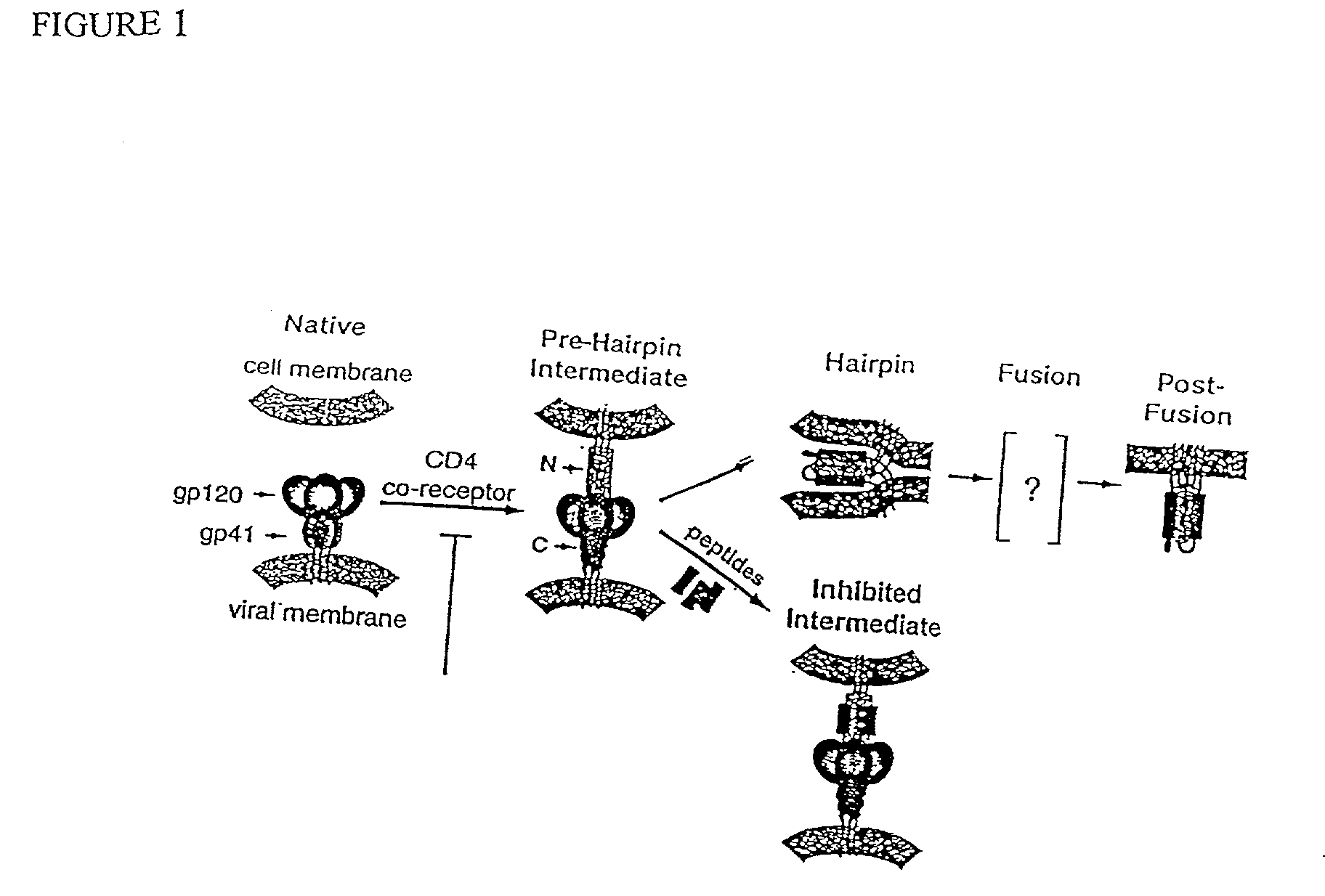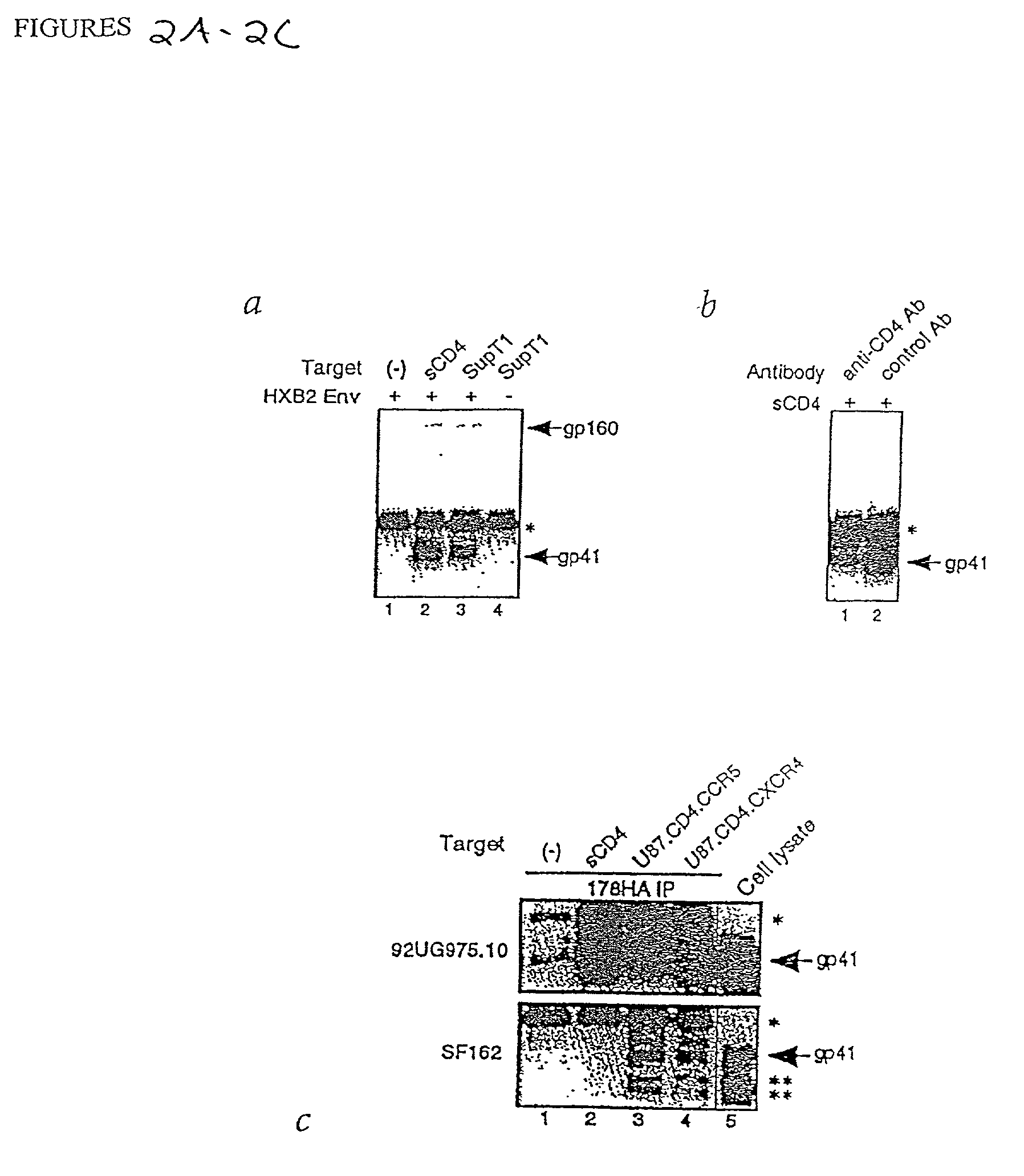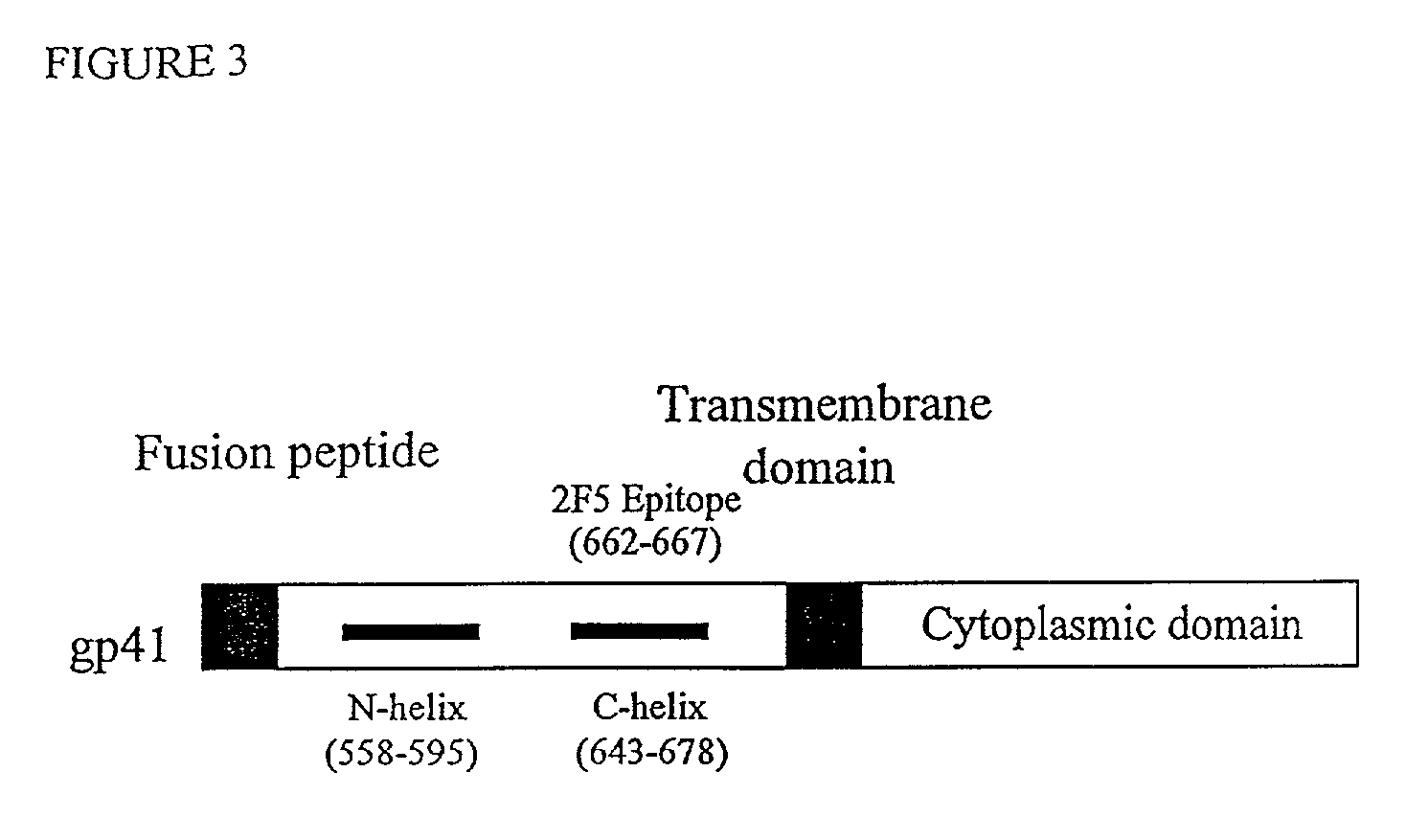Method for generating immunogens that elicit neutralizing antibodies against fusion-active regions of HIV envelope proteins
a technology of hiv envelope protein and neutralizing antibody, which is applied in the field of hiv therapy and prophylaxis, can solve the problems of c-helix not showing stable solution structure, destruction or under-representation of conformational epitopes, and inability of peptides to model, etc., and achieves dramatic effects on both structure and function, efficient abrogation structure, and high degree of sequence homology
- Summary
- Abstract
- Description
- Claims
- Application Information
AI Technical Summary
Problems solved by technology
Method used
Image
Examples
example 1
[0169] A version of the P-18 peptide tagged with the influenza hemagglutinin epitope (peptide-YPYDVPDYAGPG (SEQ ID NO:8)) was synthesized and incubated under physiological conditions with envelope-expressing cells with and without soluble CD4 (sCD4). In the presence of sCD4, the tagged peptide (P-18HA) bound to and co-immunoprecipitated gp41 (HXB2 strain) while in the absence of soluble receptor, no complex was observed (FIG. 2A). In similar experiments, co-immunoprecipitation of a recombinant form of gp41 occurred (data not shown).
example 2
[0170] To confirm the above results, an experiment using a cell expressed (SupTi) form of the CD4 receptor was conducted. As in the previous case, P-18HA complexed gp41 only in the presence of CD4. In addition, the specificity of receptor triggering was confirmed using an anti-CD4 antibody which had been shown to block CD4-gp120 binding. In these experiments, the anti-CD4 antibody blocked complex formation between P-18HA and gp41 (FIG. 2B). In all cases, controls performed as expected. From these results, it can be concluded that P-18 binds to and stabilizes a fusion-active form of gp41.
example 3
[0171] In a related experiment, it was demonstrated that the C-helical peptide binds envelope protein only after CD4 triggering. This was accomplished using a combination of viral infectivity and cell-cell fusion assays. In the infectivity assay, virus was pretreated with disruptive levels of P-18 which were diluted to sub-disruptive concentrations prior to target cell inoculation. In the cell-cell fusion assay, a similar effect was achieved by pretreating envelope expressing cells with disruptive levels of P-18, followed by washing prior to co-cultivation with CD4+ targets. The effect of the pretreatment was to expose only native (non-fusogenic) envelope (either as cell-free virions or surface expressed envelope) to disruptive levels of peptide. From the result, it could be determined whether the peptide bound to and captured a native or a fusion-active form of envelope protein. In each case, inhibition of virus replication occurred only when P-18 was present at disruptive concentr...
PUM
| Property | Measurement | Unit |
|---|---|---|
| concentrations | aaaaa | aaaaa |
| time | aaaaa | aaaaa |
| concentration | aaaaa | aaaaa |
Abstract
Description
Claims
Application Information
 Login to View More
Login to View More - R&D
- Intellectual Property
- Life Sciences
- Materials
- Tech Scout
- Unparalleled Data Quality
- Higher Quality Content
- 60% Fewer Hallucinations
Browse by: Latest US Patents, China's latest patents, Technical Efficacy Thesaurus, Application Domain, Technology Topic, Popular Technical Reports.
© 2025 PatSnap. All rights reserved.Legal|Privacy policy|Modern Slavery Act Transparency Statement|Sitemap|About US| Contact US: help@patsnap.com



